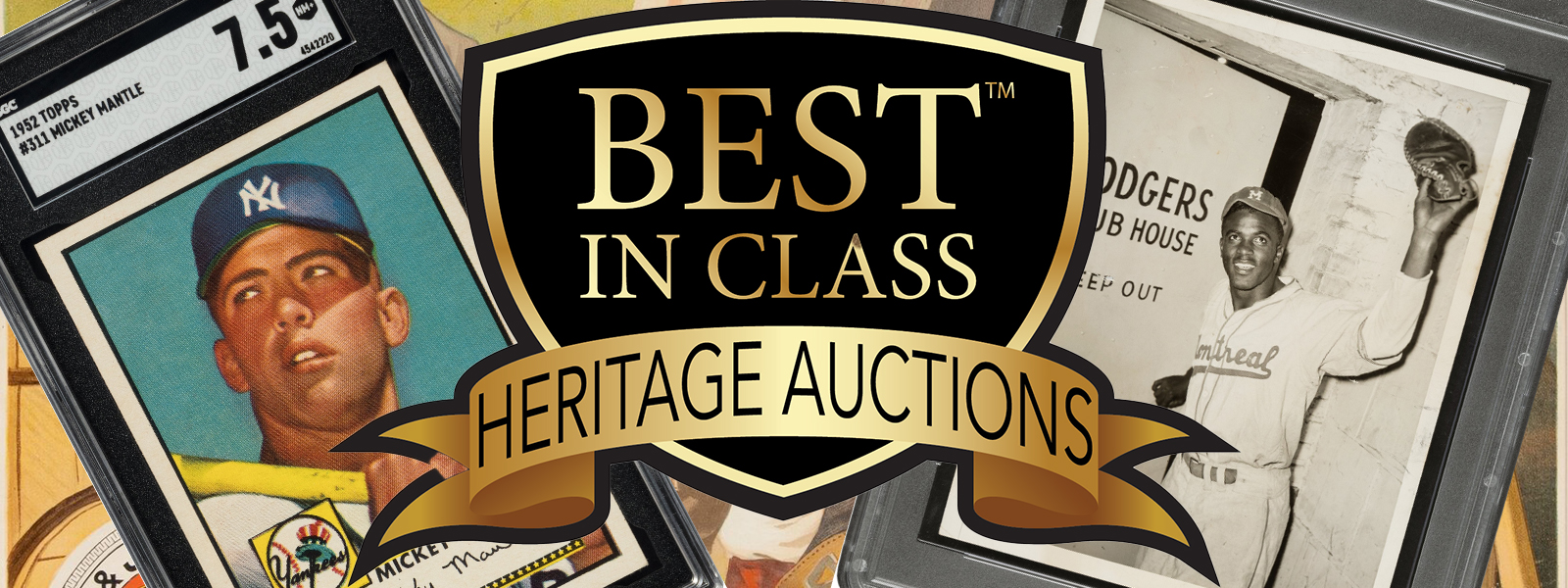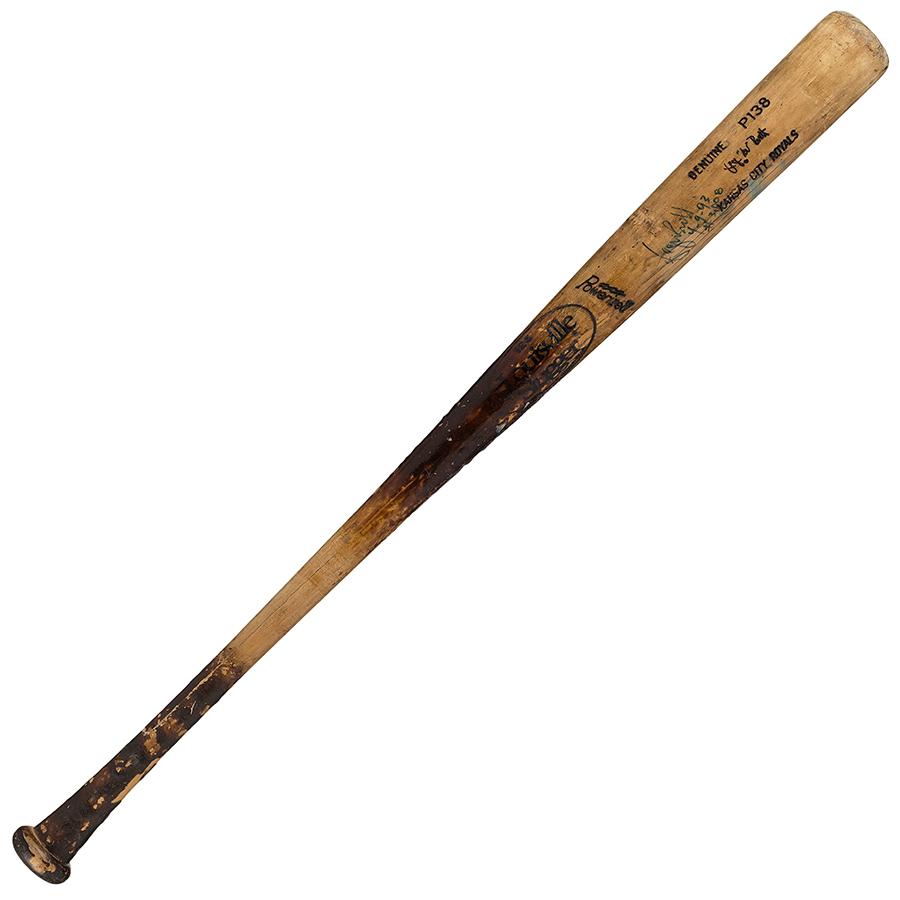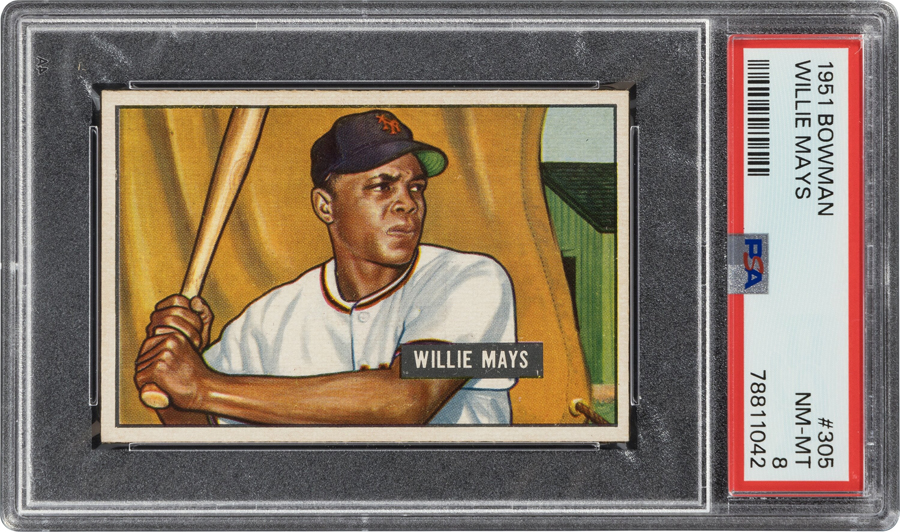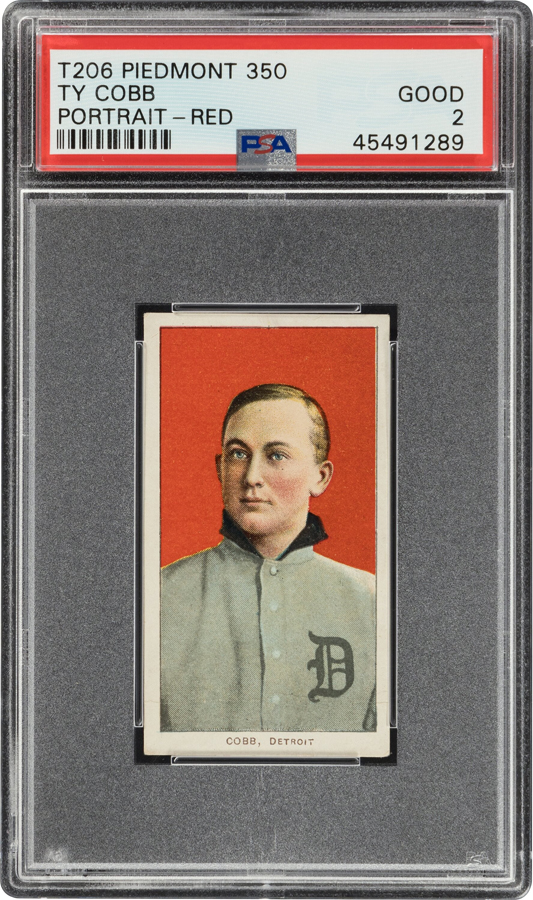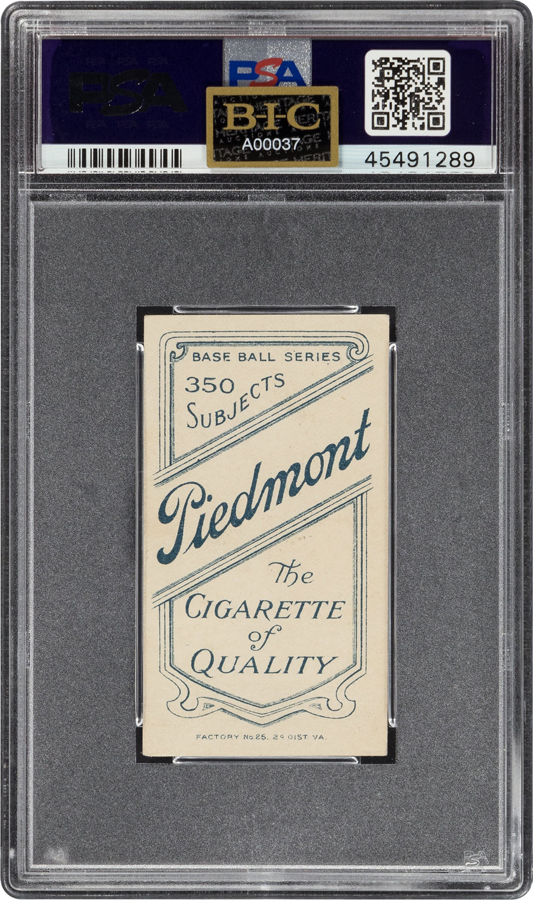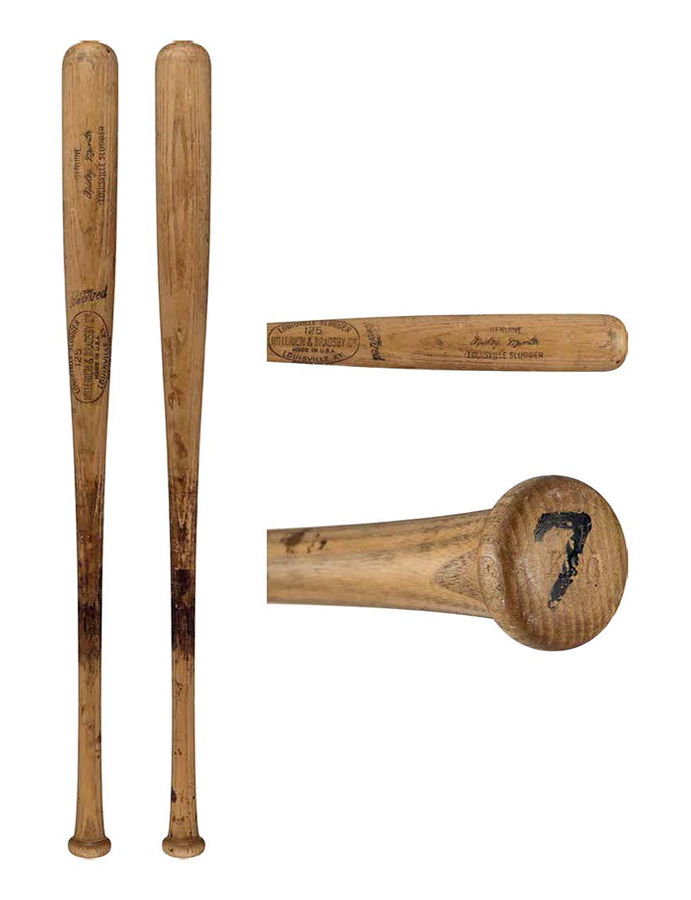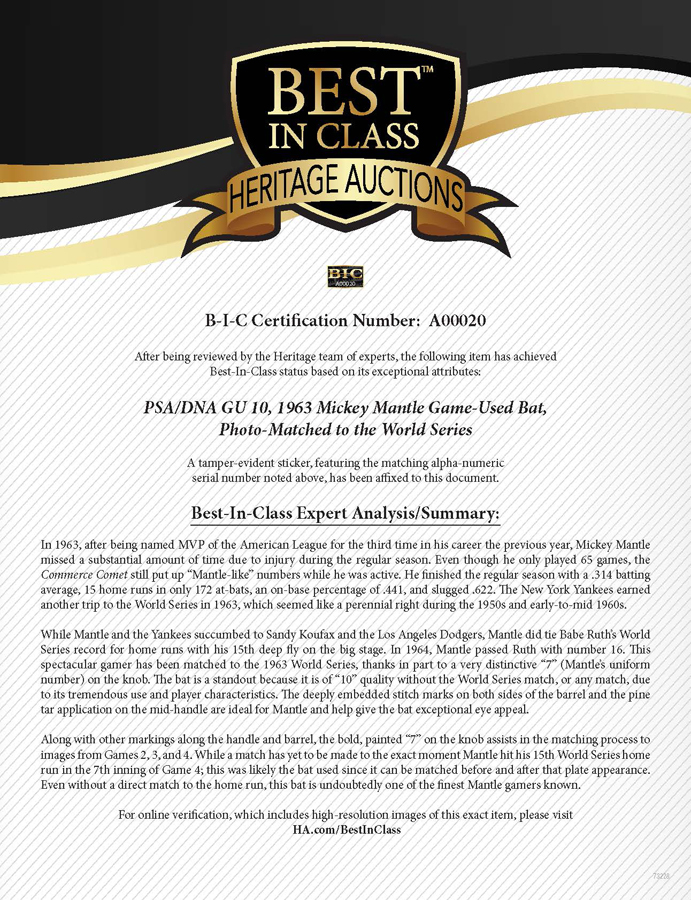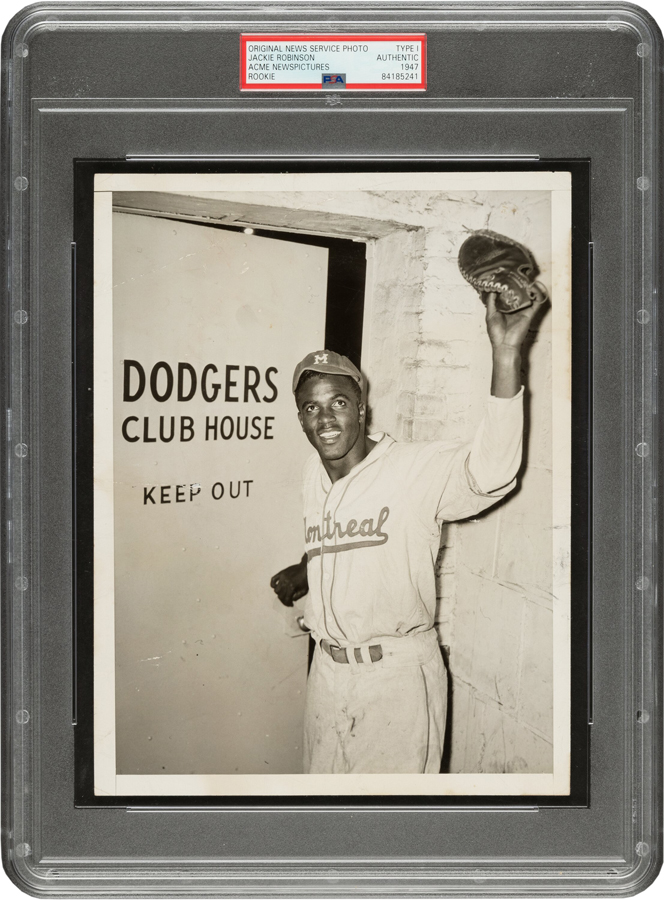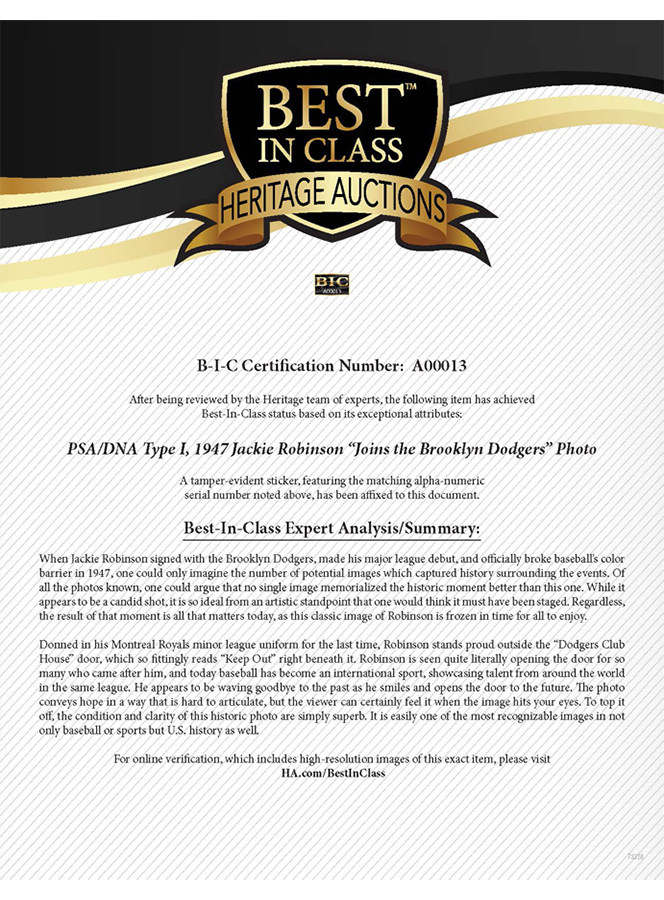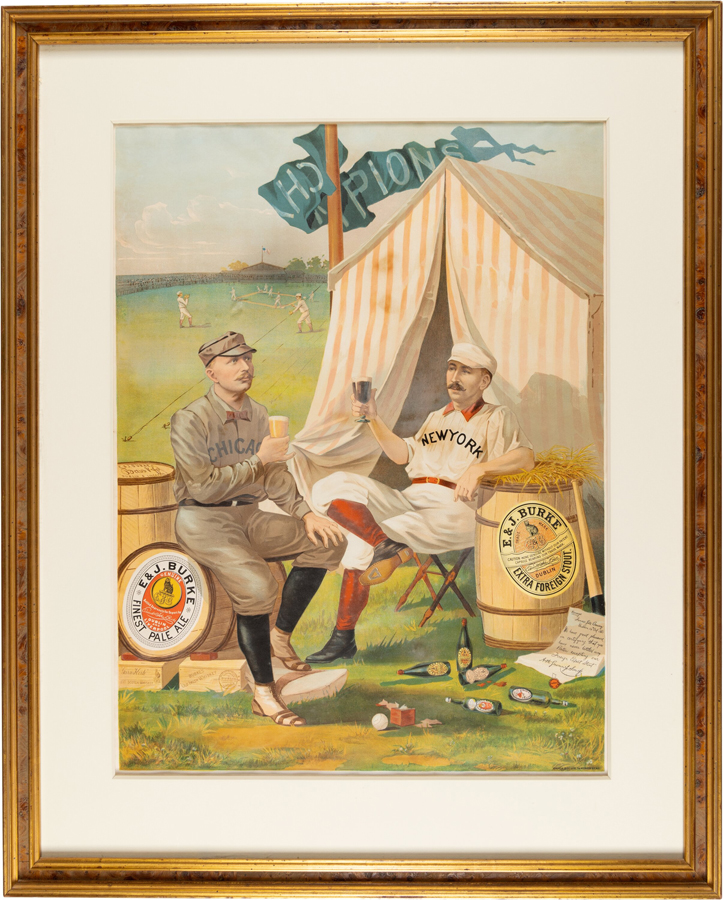TAKE YOUR SPORTS COLLECTIBLES TO THE NEXT LEVEL WITH A NEW SERVICE DESIGNED TO SEPARATE THE BEST FROM THE REST
By Joe Orlando
The sports collectibles market continues to evolve as hobbyists become more sophisticated and discerning. Veteran buyers have always been willing to pay premiums for collectibles that rise above the rest within a specific grade or category when those collectibles exhibit extraordinary eye appeal or other elite attributes.
As the collectibles market matures, this practice becomes increasingly evident.
This SGC NM + 7.5, 1952 Topps Mickey Mantle has exceptional eye appeal for the assigned grade, from the outstanding centering to its print quality and vibrant color, which is why it was certified Best-In-Class.
When new participants enter the collectibles world, however, they might not have the experience or knowledge to decipher the difference, especially when two items share the same technical third-party assessment. This not only causes confusion but also hinders buyer confidence.
Through our Best-In-Class services and collective expertise, Heritage aims to help document superior quality so the special recognition can live with the item eternally in hopes of unlocking its maximum potential value. Our mission, simply put: “To identify, certify and showcase collectibles that exhibit exceptional qualities within their given grade or category.”
Having spent more than two decades at PSA and a lifetime as a collector, I felt the time was right to introduce this service to an ever-changing industry, a service that can be applied to virtually all major categories within the sports space.
The state of preservation possessed by this 1951 Bob Feller jersey, which is part of a full uniform and graded 9.5 by MEARS, makes it one of the finest of its kind in the hobby.
Values, especially at the top end of the market, have increased substantially in the past several years. When warranted, building separation between what is truly exceptional and everything else within its category is owed to the collector and the item itself. If we can create separation, then we can help add value.
Via this service, improving peace of mind through education is the key. This is not just about tagging or applying a sticker to an item that deserves special attention; it’s about explaining why clearly and concisely. It helps inform prospective buyers by telling more of the story. The service combines documentation, explanation and presentation.
How does an item achieve Best-In-Class status?
Collectibles that receive the Best-In-Class designation are not being re-authenticated or re-graded. Where relevant and available, that foundation has already been provided by credible third-party services in various collectible categories. The service is not a review of their work. It is an attempt to consider all of the item’s attributes when the role of traditional third-party services is not necessarily the same.
Best-In-Class is also not intended to be thought of as a singular identification or only limited to a lone representative in its category. While that will be the case in certain instances, and Best-In-Class membership is designed to be exclusive, the goal of our system is to reward all items that qualify and stand out amongst their peers.
Most importantly, the criteria for “exceptional” will differ from one collectible category to another. There is no one-size-fits-all formula. Accurate assessment for each type requires expansive and diverse expertise. The Heritage team offers more than 100 years of combined professional experience in the sports collectibles industry. The depth of knowledge possessed by our team allows Heritage to cover a wide range of verticals within the sports space.
We want the Best-In-Class brand to be universal for all the collectible types it touches.
This PSA/DNA GU 10, 1993 George Brett bat not only showcases all the required attributes for its technical grade, but it also has the exact type of look that experienced bat collectors crave.
Context will be the key when reviewing each item. Best-In-Class evaluation is not the exercise of comparing a 1957 Topps Bill Russell card to one of his 1961 Fleer cards or a George Brett game-used bat from 1976 against one from 1993. Any of the aforementioned items can reach Best-In-Class status if they possess the requisite combination of attributes.
The following provides examples of Best-In-Class guidelines by category so collectors can get a sense of what drives the core of our analysis.
For trading cards, the relevant question and definition are very straightforward: “Does the card possess exceptional eye appeal for the specific issue in the grade assigned?”
If the answer is “Yes,” Best-In-Class can be achieved by any card found within the 1-to-10 third-party grading scale.
Even in high grade, the 1951 Bowman Willie Mays rookie card is often plagued by subpar centering and print defects. This PSA NM-MT 8 example is about as pleasing to the eye as one could imagine for the grade.
Here, the exercise is not about comparing the eye appeal of a 1948 Bowman card to a 1955 Topps card, nor is it the process of comparing a 1955 Topps Ted Williams to a 1955 Topps Roberto Clemente. It is also not the practice of comparing a VG-EX 4 to a NM-MT 8 example of the same card.
The test for Best-In-Class is precise when it comes to cards. We are evaluating how one example of a particular card stacks up against others in the exact same grade.
The higher you climb the grading scale, the more difficult it is to achieve Best-In-Class because we all expect high-grade cards to possess attractive aesthetics. The vital question is “Does the card stand out amongst its peers from an aesthetic perspective?” The more visually appealing the pool of card contestants is, the harder it is for one to be noticed.
The caliber of a card’s centering, registration, color, print quality, gloss, surface and more are all important when evaluating eye appeal. One could argue this eye-appeal factor is even more germane in the lower half of the grading scale than it is in the top half since wide variances in appearance are more common in that range.
This PSA Good 2, 1909-11 T206 Ty Cobb (Red Portrait) is a terrific example of how cards in the lower half of the scale can still score high marks in the eye-appeal department despite technical flaws.
The greater the potential number of defects, the more significant impact those defects can have on a card’s eye appeal. This provides ample opportunity for cards with exceptional eye appeal to stand out in lower-to-mid grades.
For cards, Best-In-Class status is primarily a reflection of a card’s beauty at arm’s length, which is how most collectors view and enjoy their cards, rather than an analytical conclusion about its technical grade.
For professional model bats, the Best-In-Class criteria are more nuanced.
Here, it is unlikely to achieve Best-In-Class as you go down the third-party grading scale. With cards, since the assessment is focused only on eye appeal within each grade, all grade categories are eligible.
When it comes to professional model bats, eye appeal (which means something entirely different in this collectible category than it does in cards) is only one of the factors considered. Best-In-Class status is reserved primarily for high-grade examples. Here, our team will be looking at attributes such as the strength of a bat’s player characteristics, evidence of use, provenance, historical importance, era and scarcity, which are examples of relevant factors, along with eye appeal.
The combination of its distinct player characteristics, evident use and definitive photo-match to the 1963 World Series make this PSA/DNA GU 10 Mickey Mantle bat a standout, even within its own grade class.
Many of these potential traits are also considered when third-party services render their grading opinion, yet wide variances in overall appeal do exist, even at the top of the bat grading scale. Not all high-grade gamers are created equal, and the Best-In-Class process is a way of separating the very best of the best from the rest, with a bat connoisseur’s eye in mind.
This “Collector’s Guide to Game-Used Bats” is a valuable resource that presents many of the factors our team will consider when reviewing each professional model gamer.
For vintage photos, the Best-In-Class criteria are explicitly tailored to the category.
This “Collector’s Guide to Vintage Sports Photos” is a valuable resource that presents many of the factors our team will consider when reviewing each developed image.
Beyond this PSA/DNA Type I, 1947 Jackie Robinson photo’s superb condition and connection to the year the icon broke the color barrier in baseball, the unforgettable image has an artistic quality that grabs the attention of its viewer.
As with bats, Best-In-Class status will almost always be reserved for photos that have already been certified as “elite” in one fundamental respect by a reputable third-party service. In the case of photos, instead of a technical grade grounded in condition, that “elite” foundation is established by photo type.
While there are potential exceptions, Type I photos will be a virtual requirement for Best-In-Class consideration. They are, far and away, the most desirable Type on the photo classification scale.
All of the photo’s additional attributes – including but not limited to condition, content (the subject of the photo), context (the circumstances surrounding the subject), clarity and contrast – are relevant to the Best-In-Class assessment. Each of these factors is explored in detail within the photo-collecting guide above.
For all other types of sports collectibles and memorabilia, from game-worn jerseys to unopened material to display pieces, the key, universal question to remember is “What makes a collectible exceptional within the specific category?”
This 1889 Burke Ale poster, featuring baseball stars Cap Anson and Buck Ewing, is one of the most historically important advertising pieces known, and its visual appeal is extraordinary when viewed in person.
More collector guides covering various additional categories can be found on our Learn More page. As it will be for all categories, context is paramount. When a collectible is certified Best-In-Class, our team will provide that context with published analysis so future buyers can better grasp its place in the upper echelon of the hobby.
Once again, these are mere examples of the thought process, so collectors have a better understanding of what the Best-In-Class designation does and does not mean. Like anything else that is new or potentially disruptive, there will be questions about the service from the collecting community, and we encourage them.
For more details on the Best-In-Class service, please visit our dedicated website at HA.com/BestInClass or contact me directly at the email address or phone number below.
While many questions will be answered on the site itself, the one I would like to address here is the relationship between the service and our auction platform. To be clear, the service is independent. There is no obligation to use our auction platform when it comes to Best-In-Class. Items submitted for this service are returned to the customer. What customers do from there is entirely up to them.
I look forward to sharing our vision and, hopefully, helping you extract maximum potential value from the extraordinary collectibles in your life.
Are your sports collectibles Best-In-Class?
 JOE ORLANDO is Executive Vice President of Sports at Heritage Auctions. He can be reached at JoeO@HA.com or 214.409.1799.
JOE ORLANDO is Executive Vice President of Sports at Heritage Auctions. He can be reached at JoeO@HA.com or 214.409.1799.

